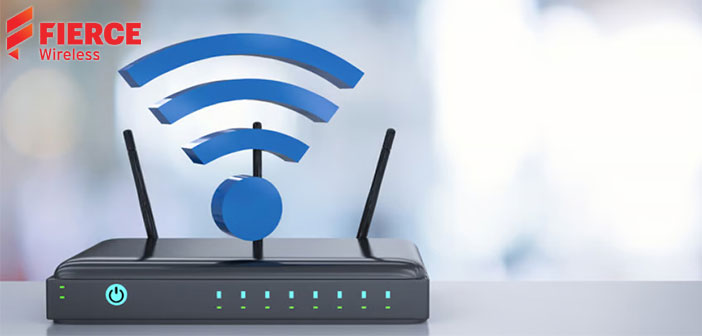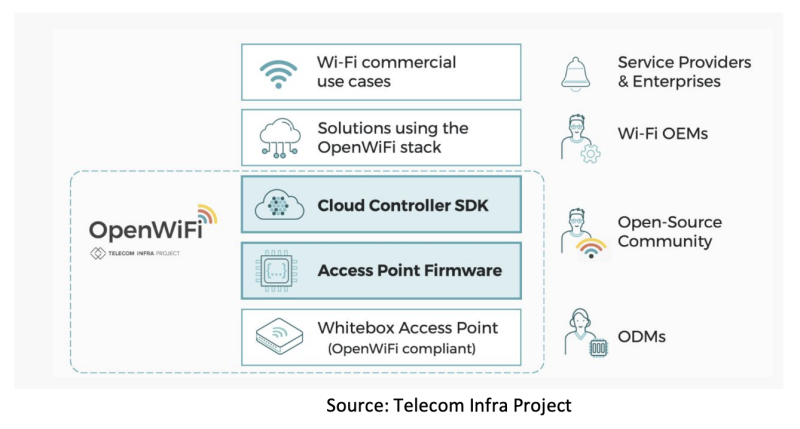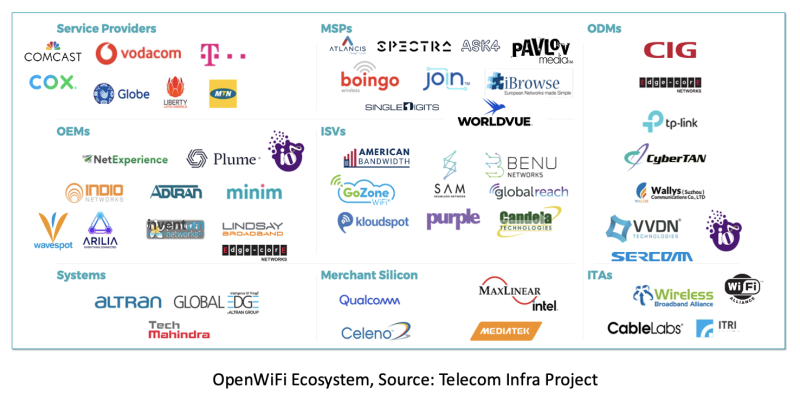14
Nov
OpenWiFi disrupts the enterprise and carrier Wi-Fi market

Most of you on Fierce Wireless have heard about open RAN, but how about OpenWiFi? Some recent announcements and launches have made the industry notice and look seriously at OpenWiFi. It is a Telecom Infra Project (TIP) initiative attempting to disrupt the Wi-Fi industry through disaggregation and open-source software development. It promises to lower the total cost of ownership (TCO), end age-old vendor lock-in, and substantially expand the ecosystem.
What is OpenWiFi?
Today’s Wi-Fi network systems are monolithic. All the hardware, software, and cloud components are proprietary and come from the same vendor. That has led to the inevitable vendor lock-in, which has resulted in a higher cost structure, less flexibility and a very high entry barrier.
TIP’s OpenWiFi is set to change all that through a disaggregated software system approach. As shown in the figure, it includes enterprise-grade access point (AP) firmware, cloud controller SDK, and white-box AP, all designed and validated to work seamlessly together. The software is fully community-developed and offered as a free, open-source stack.

Under the auspices of TIP, the ecosystem partners collaborate, contribute and develop a single code base that becomes the “plumbing” for OpenWiFi systems. Solution providers then integrate this software into white-box APs, offering customers a complete system. Since it is all open-sourced, with open APIs, solution providers, and customers can easily mix and match hardware and software from different vendors without interoperability challenges. They can also deploy their own applications, services and differentiation on the top.
What are the benefits of OpenWiFi?
The biggest allure of OpenWiFi is its lower TCO, mainly because the basic software is open-sourced (free), and open systems create a highly competitive and cost-effective marketplace. The absence of huge R&D spend considerably lowers the entry barrier. Solution providers and customers can mix and match “best of breed” parts to offer the best possible Wi-Fi performance, achieve flexibility, scalability and quick time-to-market.
Since TIP provides basic Wi-Fi plumbing, the ecosystem participants can focus on specific parts of the system in which they have expertise, and solution providers can concentrate on applications and service innovation. Overall, OpenWiFi creates a large ecosystem of diverse players.
The current state of OpenWiFi
OpenWiFi was conceived and is still managed by TIP. It is one of the groups under TIP’s OpenLAN project, started in 2021. Jack Raynor from Meta is the group chair. It includes major service providers, solution providers, chipsets, and ODM/OEM vendors. According to Raynor, as of November 2023, the group counted more than 1,100 representatives from 330 companies as its members. There were over 30 AP and cloud controller vendors. What is more impressive is that over 165,000 APs supporting OpenWiFi have already been deployed in commercial networks across the globe.


0 comments